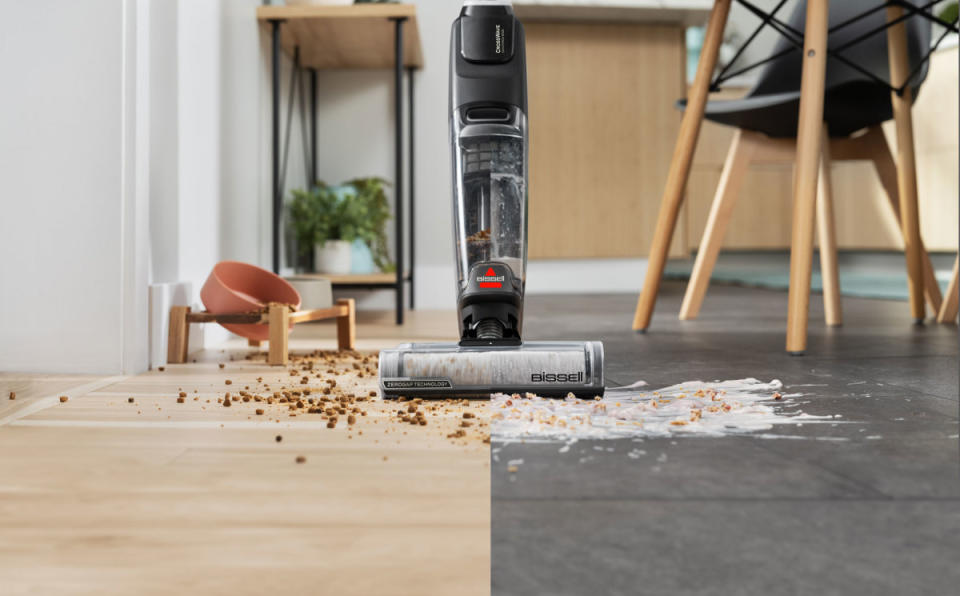Cleaning is Not Disinfecting. But Do You Understand Why?
Men’s Journal aims to feature only the best products and services. If you buy something via one of our links, we may earn a commission.
As we take a good look around our homes, we know we're doing our part to keep it clean. But are we doing enough in the way of disinfecting? "Disinfecting can often sound synonymous with cleaning; however, not many people realize they are two different actions," shares Heather Day, Principal Scientist at Clorox. "Disinfecting is the act of destroying harmful microorganisms like bacteria and viruses to ensure they do not continue to jump from person-to-person and surface-to-surface...[whereas] cleaning is the manual removal of debris, like wiping up a spill, removing clutter and picking up crumbs, dust and dirt."
As you begin to overanalyze your home and dissect public health standards to determine what surfaces are clean and which are properly disinfected, remember: Cleaning is usually only the first step to disinfecting. Cleaning prepares the area for the disinfecting phase of housekeeping, but it doesn't ward against the spread of infection or harmful germs.
The Difference Between Cleaning vs. Disinfecting
Areas of the household that are cleaned include:
Sweeping and vacuuming the floors
Dusting shelves, ceiling fans, and picture frames
Organizing the garage
Areas of the household that should be disinfected include:
Kitchen countertops and heavily used appliances including the kitchen sink
Areas that come in contact with food or raw meat, like cutting boards
Bathroom countertops and toilets
High-touch surfaces like doorknobs, light switches, and door handles

Bissell
Choosing Cleaning Products That Also Disinfect
"The best way to ensure you’re using a disinfectant product correctly is by reading product labels," reminds Day. "Cleaning supplies that disinfect will say so and many products are multi-purpose – or example, a spray cleaner like Clorox® Disinfecting All Purpose Cleaner can clean up daily grease and grime and disinfect, meaning it can kill 99.9% of bacteria and viruses on hard, nonporous surfaces." Avoid relying on commercial cleaning products that imply that they disinfect without confirming on the active ingredient label. There's a difference between sanitizing and "deep cleaning," too! Not all all-purpose cleaners are technically antibacterial cleaners.
Even the New York Times indicates that Clorox products are leaders in disinfecting, but we also look to powerful steam cleaners and vacuums, like BISSELL® CrossWave® OmniForce™ which helps users sweep and mop in tandem using one tool. Paired with its Hard Floor Sanitize Formula, it sanitizes as you go to eliminate 99.9% of bacteria on hard surfaces.
Related: 20+ Surfaces to Clean During Cold + Flu Season
There's no arguing that cell phones are dirty surfaces. In fact, Simplehuman reports that the average person touches their phone 2,617 times each day, making sanitization to reduce the spread of illness extremely important. While many chemical disinfectants can put our devices at risk, products like the Cleanstation offer a way to eliminate 99.9% of germs and harmful bacteria in 30 seconds using UV-C LED lights (you won't even need to remove it from its case).
Remember: To properly sanitize or disinfect and reduce the spread of diseases, it is important to allow the product to stand on surfaces for the time listed on the label. Don't be quick to wipe it down with a paper towel or microfiber cloth! It differs from product to product.
Related: Is Someone in Your Home Sick? Learn How to Sanitize Their Laundry

